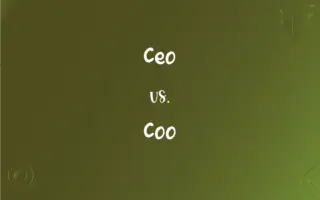Elastic Demand vs. Inelastic Demand: What's the Difference?
Edited by Aimie Carlson || By Harlon Moss || Updated on October 13, 2023
Elastic demand is sensitive to price changes, while inelastic demand is not significantly affected by them.

Key Differences
When delving into economic principles, elastic demand and inelastic demand stand out as pivotal concepts, instrumental in comprehending consumer behavior and pricing strategies. Elastic demand transpires when the quantity demanded of a good or service exhibits a substantial response to changes in its price. It typically pertains to non-essential goods, which may have available substitutes, causing consumers to alter their purchasing behaviors following price fluctuations.
In stark contrast, inelastic demand describes a scenario where the quantity demanded of a good or service is relatively impervious to variations in its price. Essential goods and services, or those without close substitutes, often exhibit inelastic demand because consumers continue to purchase them even when prices ascend, owing to their necessity or lack of alternative options.
It's imperative to recognize that elastic demand usually offers businesses a limited scope for implementing price escalations without adversely impacting demand. Price hikes in the realm of elastic demand can drastically reduce consumption as consumers pivot towards alternative, more economically viable options. Conversely, inelastic demand empowers entities with the leeway to adjust prices, especially elevating them, with minimal repercussions on demand, enabling enhanced revenue generation without significantly deterring consumption.
Delineating between elastic and inelastic demand allows businesses to adeptly navigate pricing strategies, maximizing profitability while maintaining consumer engagement. Companies dealing with goods exhibiting elastic demand might employ strategies like sales promotions and discounting to entice consumer purchases. In contrast, those dealing with goods exhibiting inelastic demand might leverage the robustness of demand, even amid price elevations, to bolster revenue, especially in scenarios where cost structures necessitate pricing adjustments.
Moreover, elastic demand and inelastic demand can also profoundly impact governmental policies, particularly in the context of taxation. Goods with elastic demand may not be optimal candidates for tax increases since the subsequent price escalation could substantially diminish consumption, thereby reducing the anticipated tax revenue. Meanwhile, taxing goods with inelastic demand can potentially furnish governments with a consistent and substantial revenue stream due to the relative price insensitivity exhibited by consumers.
ADVERTISEMENT
Comparison Chart
Response to Price Change
Significant
Minimal
Type of Goods
Generally non-essential
Often essential
Pricing Flexibility
Limited
Greater
Impact of Price Increase
Larger decrease in demand
Smaller decrease or stable demand
Availability of Substitutes
More likely
Less likely
ADVERTISEMENT
Elastic Demand and Inelastic Demand Definitions
Elastic Demand
Reflects consumers' willingness and ability to delay consumption when prices escalate.
Consumers wait for discounts to purchase electronics, showing their elastic demand.
Inelastic Demand
Pertains to goods or services deemed necessities, thereby resistant to price-induced demand fluctuation.
The inelastic demand for salt ensures steady sales, even if prices mildly elevate.
Elastic Demand
A scenario where alternatives exist, causing price sensitivity.
The elastic demand for Brand A's soda decreases sales if prices rise, as consumers choose Brand B.
Inelastic Demand
Typifies scenarios where no substantial substitutes exist, curbing responsiveness to price adjustments.
The inelastic demand for specific life-saving medications means price hikes won’t significantly deter sales.
Elastic Demand
Describing goods or services substitutable or non-essential, thus price-affected.
In the case of elastic demand, the sales of designer handbags plunge when prices soar.
Inelastic Demand
Demand characterized by negligible change despite price alterations.
Even with soaring prices, inelastic demand for insulin ensures consistent purchases by those in need.
Elastic Demand
Demand that significantly reacts to price changes.
Luxury cars often have elastic demand, with sales dropping as prices rise.
Inelastic Demand
Describes demand where percentage change in quantity is less than percentage change in price.
Despite a price hike, inelastic demand for gasoline results in minor shifts in purchasing patterns.
Elastic Demand
Demand where percentage change in quantity exceeds percentage change in price.
A small price increase for fast fashion items may cause a large fall in quantity demanded due to their elastic demand.
Inelastic Demand
Denotes a demand type where consumer purchasing is largely unaffected by price increments.
Due to its inelastic demand, bread sales often remain stable despite price fluctuations.
FAQs
What kind of goods typically exhibit elastic demand?
Luxury goods, non-essentials, or those with available substitutes.
What happens to the quantity demanded in elastic demand when prices rise?
Quantity demanded typically decreases.
Why might governments tax goods with inelastic demand more heavily?
Because the tax is less likely to substantially decrease demand.
How does the availability of substitutes affect elastic demand?
Greater availability of substitutes typically enhances elasticity.
Is salt generally considered to have elastic or inelastic demand?
Salt is commonly cited as having inelastic demand.
Can a product have different demand elasticity in different markets?
Yes, cultural, economic, and availability factors can cause variations between markets.
Can a good have both elastic and inelastic demand under different circumstances?
Yes, depending on factors like time frame, available substitutes, and consumer necessity perception.
How might a firm navigate pricing for a product with highly elastic demand?
They might employ sales, discounts, or bundled pricing to incentivize purchases.
Can the elasticity of demand for a product change over time?
Yes, factors like emerging substitutes or shifting consumer preferences can alter it.
Why might a business prefer to operate in a market with inelastic demand?
It provides more pricing power and potentially more stable revenues.
Is the demand for fast-food generally considered elastic or inelastic?
It can vary but is often considered to be somewhat elastic.
How might a sudden technological advancement impact the elasticity of demand?
It could increase elasticity by providing new, substitute products.
How do businesses exploit inelastic demand to maximize profits?
They may raise prices, as demand is likely to remain stable.
Which demand type is likely to exhibit a smaller change in quantity demanded relative to price change?
Inelastic demand.
Are goods with elastic demand always luxury items?
Not always, but luxury items often exhibit elastic demand.
Why might basic staple foods exhibit inelastic demand?
Because they are necessities, and consumers buy them despite price changes.
What is a quintessential example of a product with elastic demand?
Often, luxury cars are cited as an example.
Does inelastic demand influence product pricing strategies?
Yes, goods with inelastic demand may see more frequent or steeper price increases.
Are services or goods more likely to exhibit elastic demand?
It depends on factors like necessity and availability of substitutes, not whether it's a good or service.
How might a firm respond to recognizing their product has very inelastic demand?
They might explore the viability of raising prices to increase revenue.
About Author
Written by
Harlon MossHarlon is a seasoned quality moderator and accomplished content writer for Difference Wiki. An alumnus of the prestigious University of California, he earned his degree in Computer Science. Leveraging his academic background, Harlon brings a meticulous and informed perspective to his work, ensuring content accuracy and excellence.
Edited by
Aimie CarlsonAimie Carlson, holding a master's degree in English literature, is a fervent English language enthusiast. She lends her writing talents to Difference Wiki, a prominent website that specializes in comparisons, offering readers insightful analyses that both captivate and inform.






































































